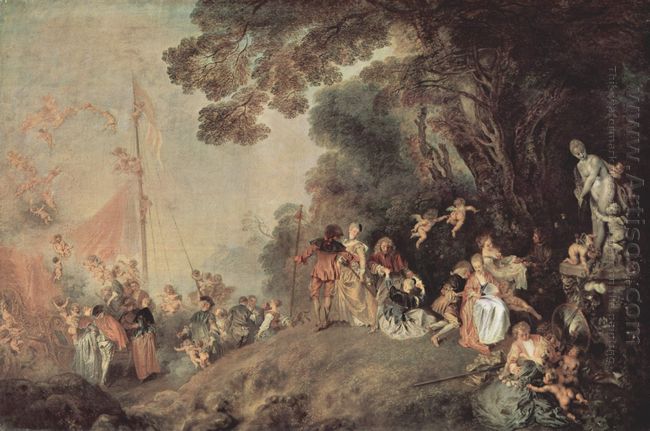
The painting Embarkation for Cythere was a famous representative work of Watteau. The theme was taken from an opera at that time, depicting a group of noble men and women were dreaming to have a carefree love paradise. Cythere was a beautiful island full of love and amusement in the Greek mythology where the cupid Venus lived. Watteau tried to describe the scene that the noble men and women were ready to visit there. Since it was a pleasant ground, the painter took the azure blue sea as the background and used the wide mist-covered waters to make people crave the environment wings of imagination.
In this painting, the three sisters were depicted to embark for Cythere with their lovers and seek the heaven scenery and eternal love. The painter divided the characters into several groups. The foreground was three siblings and their lovers. They were in couples to be ready to leave with their dear lovers. The painter carefully conceived the plot which men and women sitting in the front extended the audience’s attention gradually to the pair of lovers who was getting up, walk slowly and then check out. The whole oil painting formed a flow of time curve, resulting in the contrast between the characters and the peaceful activities silent scenery.
As this painting was very successful, Jean Antoine Watteau was appointed as the academician by the French Art Academy on August 28, 1717. Henceforth, he gradually became famous. Lots of people were looking for his paintings, so that he was too busy to attend to all. His life had greatly improved, but he was still diligent in painting. In early 1716, he finally had a separate house provided by Xiluwa and he was able to feel at ease in his painting creation. This painting was completed in 1717, which measured 129 x 194 cm and now preserved in the Le Louvre Museum in Paris.